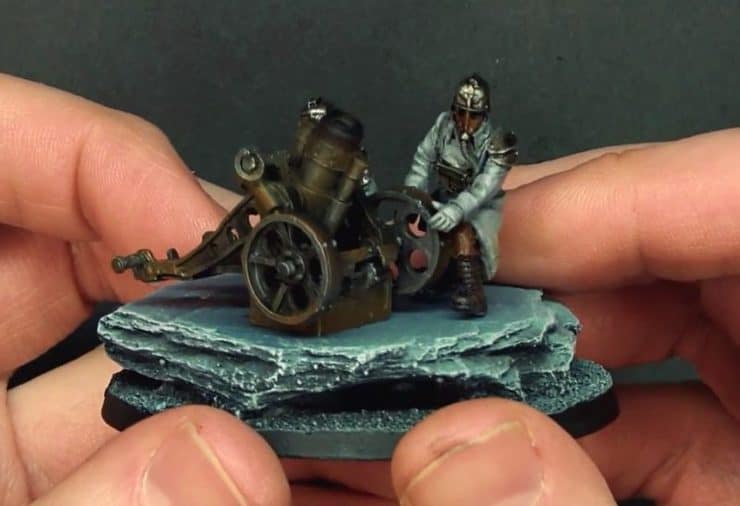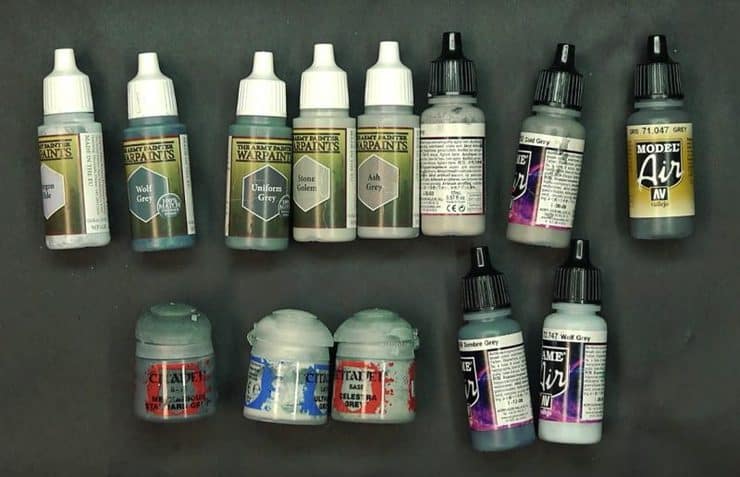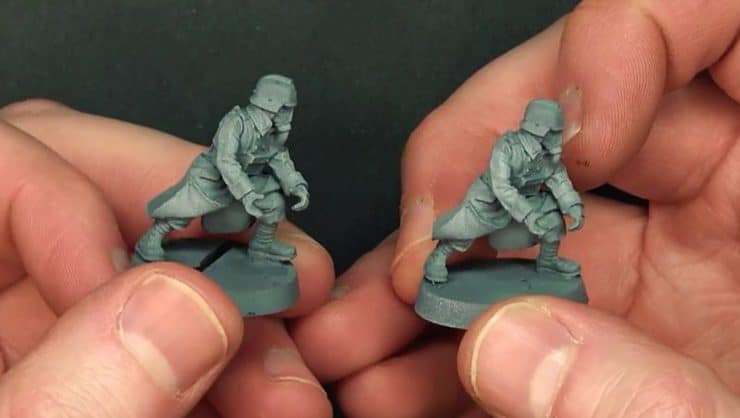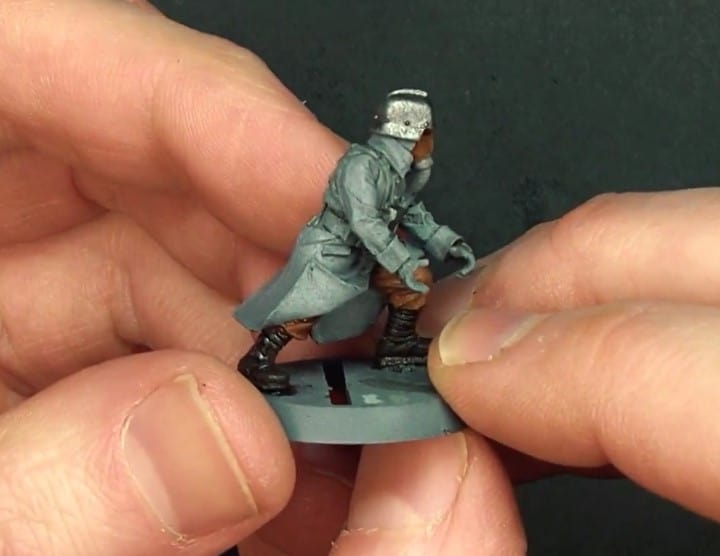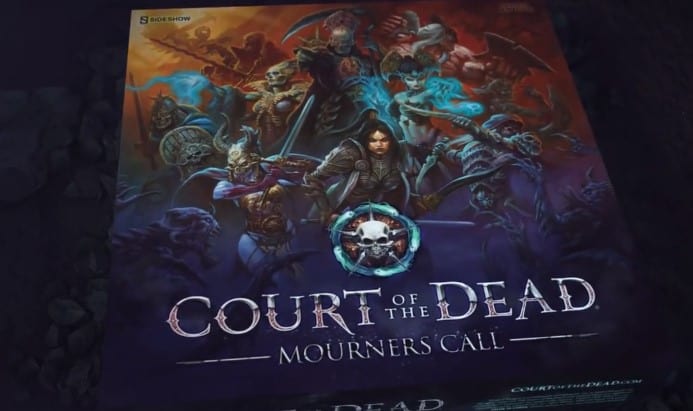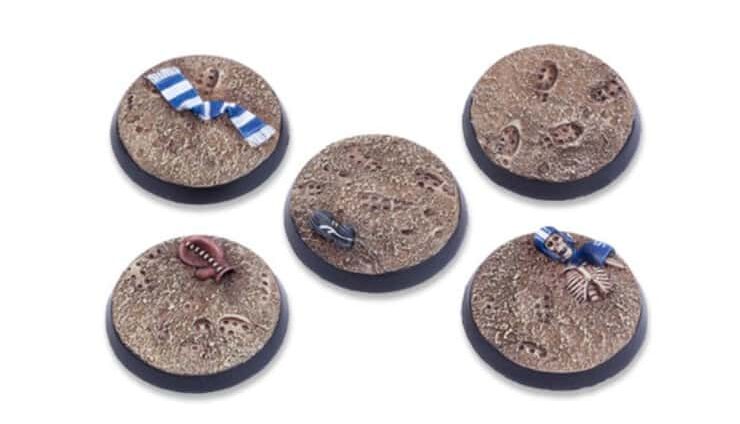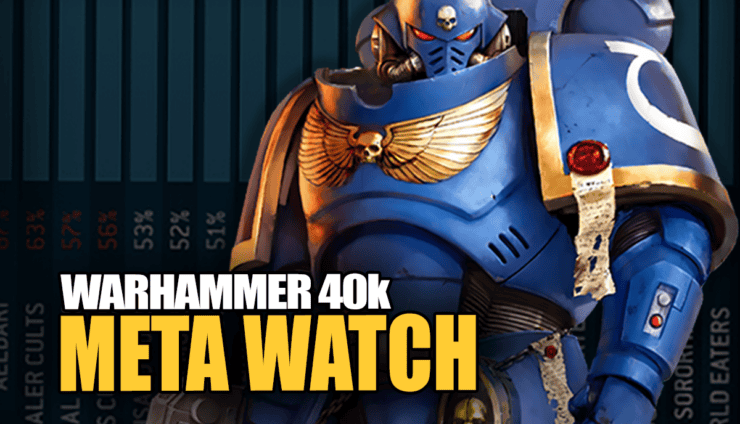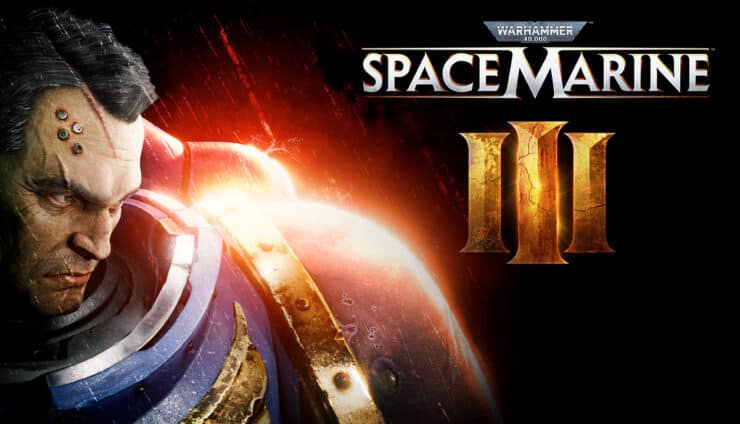Confused by all the options for grey paint? Take a look at three easy steps to painting grey, and an introduction to many of the grey paint on the market today.
With so many brands of paint available, selecting your colors can be difficult. A lot of lines have extremely similar shades of grey paint, so knowing some of the ins and outs of each one can be helpful. Take a look at this quick overview then be sure to watch the video below for a more comprehensive discussion of each grey and how to effectively work with them.
Introduction to Greys
Every brand of paint has their own line of grey paint, which can get a little confusing when selecting colors. Here is a quick overview of some of the greys in Army Painter, Vallejo, and Games Workshop Citadel paint lines.
- Army Painter Blue Greys: Gorgon Hide, Wolf Grey, Uniform Grey
- Army Painter White Greys: Stone Golem, Ash Grey
- Vallejo White and Neutral Greys: Stonewall Grey, Cold Grey, Grey
- Vallejo Blue Greys: Sombre Grey, Wolf Grey
- Citadel White Greys: Ulthuan Grey, Celestra Grey
- Citadel Neutral Grey: Mechanicus Standard Grey
But how do you start a project using greys? The best way to start is using a neutral primer such as Chaos Black by Citadel or Matt Black by Army Painter. Army Painter also has some of their greys in rattle cans, which color match with the greys in dropper bottles. Vallejo paints are very versatile and are more readily available than Army Painter and come in Model Color, Model Air, Game Color, and Game Air varieties.
Citadel paints are available wherever Games Workshop products are sold and have good pigments in them. They can be pricey, however, compared to Army Painter.
Working with Greys: Step One
This tutorial focuses on using Vallejo and will talk about painting with both an airbrush and a normal brush. To start, the models were primed with Army Painter Uniform Grey spray and one was airbrushed with Vallejo Stonewall Grey, sprayed from the top down to give the model a pre-shade. Stonewall Grey can be applied via drybrush technique as well, if you don’t have an airbrush, to give a similar effect.
Working with Greys: Step Two
Once the pre-shade is completed, either via airbrush or drybrush, getting contrast is important and will be easiest with a wash. Nuln Oil Gloss by Citadel, mixed with some Vallejo Flow Improver, is a fantastic wash to get great contrast with greys.
Mixing the wash with Flow Improver makes the wash thin to move over the model easily and prevent that coffee stain effect that sometimes happens with pure wash. Pro tip: test your wash prior to applying it to the model to see what the opacity is! To apply, use a brush that holds a decent amount of liquid and wash from top to bottom, letting gravity help draw the wash into cracks and folds. Be sure there isn’t a lot of pooling as well.
Working with Greys: Step Three
Once dry, the model will have contrast in folds but also be tinted over the other parts of the model. It will be a bit glossy, due to the gloss wash, but can be adjusted with a flat coat. It can also be painted over directly here. The next step is to highlight with Vallejo Cold Grey, applying a thin coat over the raised edges of the coat to apply a natural highlight where the fabric would be naturally lighter than other areas.
Once dry, Stonewall Grey by Vallejo is applied as a hyper highlight, getting a brighter highlight where the light would hit or in areas that have a straight edge.
In summary, this is a really easy way to get a great looking cold grey appearance. Using some limited colors and a wash, the greys look fantastic. You can use other tones in the same techniques to get different feels to your models and greys but overall is fairly easy.
Be sure to check out the video below to see the entire tutorial and guide to greys, and how to paint a Death Korps of Krieg model as well.
